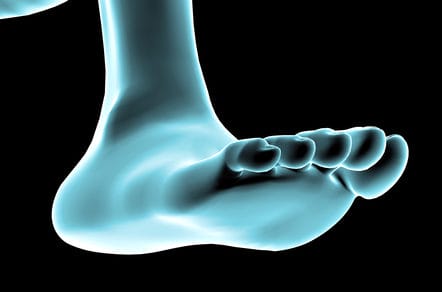The windlass mechanism is an integral function of the foot that is critical to efficient walking and running. I am going to tell you all about how the windlass mechanism works to help you do what you love and how to test it yourself!
What is Windless Mechanism?
The windlass mechanism is simply put, the tightening of the fascia (rope may be the better term) on the bottom of your foot as you push-off.
As it tightens it acts to stop your foot collapsing by supporting your arch and helps propel your forward, conserving precious momentum and energy!
Why do We Need This Mechanism?
It is so incredibly important that this mechanism works
If you want to keep walking or running pain-free – you need this mechanism functioning. If it doesn’t you could end up with one of a number of injuries, including:
- Plantar fasciitis
- Metatarsal and navicular stress fractures
- Achilles tendinopathy
- “Shin splints”
Not to mention the undue pressure that gets put through your knees, hips and low back.
How Does Windlass Mechanism Work?

As you walk and run a huge amount of force is put through your feet and so the plantar fascia has a very high tensile strength to hold the foot together and prevent it collapsing.
Because the fascia runs from the heel to the toes, as the foot is put down, the fascia is stretched which stops the toes spreading away from the heel – and so keeping the arch from collapsing.
Without this we would walk with no efficiency and our feet would be continually collapsing in (over-pronating) – Not ideal.
The really fantastic part of the mechanism is at the end of the gait cycle when our heel comes off the ground.
As the heel comes up and the big toe stays on the ground getting pushed up, the plantar fascia is put on further stretch.
This winds the fascia around the balls of your feel like a pulley system which shortens the distance between the heel and the balls of your feet to raise and stabilize the arch of your foot.
This means there is no weak point in the foot – it is nice and stable to that you can really push-off and not lose any force.
Check out this clear and concise video that shows the mechanism well.
Achilles Tendon Pitches in As Well
Interestingly the Achilles tendon also helps tension the plantar fascia.
This is because collagen fibers from the Achilles tendon go around the heel to blend in with the outer layer of the plantar fascia.
This is a great example of how the body is connected and really works in synergy and not in isolation. This connection can also have a negative effect on the plantar fascia if the calves are too tight but we will address this in a future post.
Check Out Windlass Mechanism in Action at Home – Test is Yourself
Have a buddy standing up, fully weight-bearing and then you lift their big toe (they need to be putting their weight through the foot).
You will see the inside arch lift up as you lift the toe up. This is exactly what happens (or close to anyway) when you step through and push-off your big toe!
This is a really simple test but it can tell you so much. The windlass mechanism could be:
- Delayed
- Not happening at all
- Or needing a lot of force to initiate
And it is also a great test to see if your orthotics do in fact help: Do the test standing on the ground and then standing on your orthotic and see if:
- It is easier to lift the big toe
- The arch rises up easier or smoother
- The arch lifts up quicker or earlier.
Summary
This is another pretty cool example of how our body is an amazing machine!
A simple little mechanism and yet it makes us be able to run far, fast and smoothly while absorbing shock and preventing injury.
And it’s an important aspect for any health professional to check for any lower limb or back injury.
A good example of an injury where the Windlass mechanism is often not working is Plantar Fasciitis.
If you have arch or heel pain when walking, running and getting up in the morning – check this page out for exercises to rehab it and for your own sake – Don’t wear flip-flops.
Stay tuned in!

